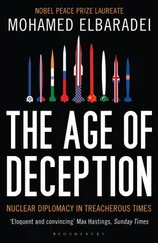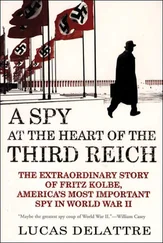If Moscow was difficult, the provinces were even harder to reach. Western spy services maintained a particular interest in the Baltic, which they saw as a potential launch pad for World War Three. Electronic snoopers scoured the airwaves for transmissions to be deciphered and analysed; spy aircraft made high-altitude over-flights. Analysts scoured the Soviet media for clues about infrastructure, demographics and public morale (while Soviet censors tried to ensure that even the most innocuous information could not be pieced together to reveal a secret). Human intelligence continued too, using to the maximum the limited opportunities for tourism and commercial travel in the region. Sailors on merchant vessels during shore leave could keep their eyes and ears open, and empty dead-letter boxes or pass on money. Occasional cultural and sporting events let foreigners visit, mingle and discreetly disappear. But for most visitors, let alone spies, making private contacts was risky to impossible. 8
In this intimidating climate, the British and Americans did what they could. From the mid-1960s, under the legendary leadership of Harold Shergood (known as Shergy), MI6 focused on recruiting and running Soviet sources in third countries, or non-Soviet ones inside the Soviet Union. Careful operations involving individual agents replaced the leaky, ramshackle networks of the past. After the fiascos of the 1950s, British intelligence dumped unreliable émigrés, and retired incompetents such as Carr. It trained its officers better in practical spycraft, such as meticulous use of dead-letter boxes and brush contacts. The proper use of forged identities evolved too: technical competence is only one element of success; just as important is the context in which the identity is used. Officers and agents were drilled in anti-surveillance and counter-intelligence procedures. Every clandestine meeting involved fall-back plans. Counter-intelligence scrutiny, once a backwater, became more thorough. Spies could expect to be quizzed about anything new or unusual in their lives, from new neighbours to new lovers. SIS also gained a new quasi-academic side: researchers and experts with a far fuller understanding of the intricacies of Soviet bureaucracy than enthusiasts like Carr, able to piece together the careers of opponents and targets from the most fragmentary clues. These efforts over many years did eventually bear fruit, for SIS with the Czechoslovak Miloslav Kroča (whose daughter received her belated reward in 1990); with Oleg Penkovsky (who was executed) 9and later with Oleg Gordievsky (who was snatched from the KGB’s clutches). 10For the CIA the roll of honour includes spies such as Dmitri Polyakov and the weapons scientist Adolf Tolkachev, executed in 1986. 11However it is notable that (as far as can be judged from published sources) the vast majority of SIS and CIA recruits in the Soviet bloc – who in the period 1960–1990 numbered at most eighty and perhaps as few as forty that were of any use – were volunteers motivated by idealism, rather than recruits achieved by all the costly and risky efforts to pitch and persuade.
As the Cold War ended, many wondered if this expensive and fairly unproductive espionage apparatus was still needed. CNN, not the CIA, had proved the best guide to the fall of the Berlin Wall and the coup of August 1991.
We didn’t have any spies in place who could give us much insight into the plans of the East German government or for that matter the intentions of the Soviet leadership,
recalls Mr Bearden bleakly. 12Clearly the Kremlin had no desire and little ability to attack the West. It had wound down its involvement in regional conflicts in Latin America, Africa, Afghanistan and the Far East, and was making great efforts to bury past enmities. Particularly in France, Germany and the United States, some political leaders saw their spy services as a troublesome legacy of the bad old days. Friendly countries should not spy on each other, particularly if they wanted to stay friends. The cloaks and daggers belonged in the cupboard. The KGB’s aggressive behaviour was simply mirroring the similarly cowboyish behaviour of the Western agencies.
This was a Panglossian approach. Soviet spying continued up to the moment that the USSR collapsed and carried on almost unbroken under the Russian flag. Even in the depths of the collapse, the SVR (as the First Chief Directorate of the KGB was renamed in December 1991) was preparing a new echelon of agents. In May 1992, two Russian illegals were arrested in Finland carrying British passports in the names of James Peatfield and Anna Marie Nemeth (two real people who were bewildered to find their identities being used in this way). The couple’s true names were Igor and Natalya Lyuskova, and they were apparently on a training assignment. Under political pressure, SIS and its Finnish counterparts downplayed the affair. Later that year, ‘Heathfield’ arrived in Canada to start his bogus studies. The most longstanding of the illegals caught in 2010, the ‘Uruguayan’ Juan Lazaro, had moved to New York in 1985, for a mission that began almost simultaneously with Mr Gorbachev’s reforms. Even more worrying for the West would have been the knowledge of the human time-bombs left behind by the KGB in the territory that it appeared to be vacating. As the empire retreated, it safeguarded copies of its most valuable asset: the secret police files showing past collaboration.
Few worried about that in the hectic late 1980s and early 1990s. What kept the spies in business was instability. No sooner had Western leaders grasped that the new rulers in Moscow were friendly than they worried about their fragile grip on power. From its start in 1986 to its end in 1999, the era of openness in Moscow always looked temporary. Western politicians feared a coup, clampdown or electoral reverse that could put an authoritarian regime back in power (though when this turn of events actually came about, with the rise of Mr Putin and the Siloviki , politicians stubbornly ignored their intelligence services’ warnings).
Some canny Western intelligence analysts had long noticed the growing resentment of Russian chauvinism and raised the unfashionable possibility that ‘nationalities’ might be the regime’s Achilles heel. 13That notion turned from academic theory to red-hot reality as the Baltic independence movements (and their counterparts in the Caucasus, Central Asia, Moldova and Ukraine) stirred from the shadows in the mid 1980s. But having once tried to subvert communism and free the captive nations, the West’s political leadership were unhappy when the supposedly longed-for day loomed close. It seemed much wiser to prop up the Soviet empire for the sake of stability. Analysts who trumpeted the joyful news of the impending collapse found themselves cold-shouldered. For a generation reared on the idea that the Soviet Union was a geopolitical fixture, it was also hard to grasp that its component parts were becoming countries in their own right. Though the Baltics had been countries at least in living memory, others, such as Georgia, had been off the map for most of the century and some Soviet republics – such as giant, oil-rich Kazakhstan – had never been states at all. Similar worries applied to the new Russian Federation after 1991. Would it stay together, or disintegrate under the continuing strains of economic hardship and ethno-nationalist ambition?
The great fear for the West was of a Yugoslav-style conflagration. That country – another seemingly permanent entity – began its descent into war in 1991 in a botched but largely bloodless attempt to prevent Slovenian independence. Later, around 140,000 people were to die, with more than 4m displaced (I am glad that Dušan, Olgica’s uncle in Oxford, did not live to see it). 14A similar conflict in the former Soviet space would not only be bigger, but could involve nuclear weapons. According to the conventional wisdom of the time, radical nationalist politicians were pushing too hard and too fast for independence. An outbreak of chaos or bloodshed might give hardliners in Moscow an excuse to declare martial law and end the reform experiment. For countries neighbouring the Soviet Union, another nightmare was of a lawless, poverty-stricken conflict zone, bringing refugees, terrorism and extremism into the tranquil world that they had preserved throughout the Cold War. ‘There are no good outcomes to this,’ a Finnish official told me glumly in Helsinki in 1991 as I arrived to spread the joyful news of the impending end of the Soviet occupation of the Baltic states.
Читать дальше












